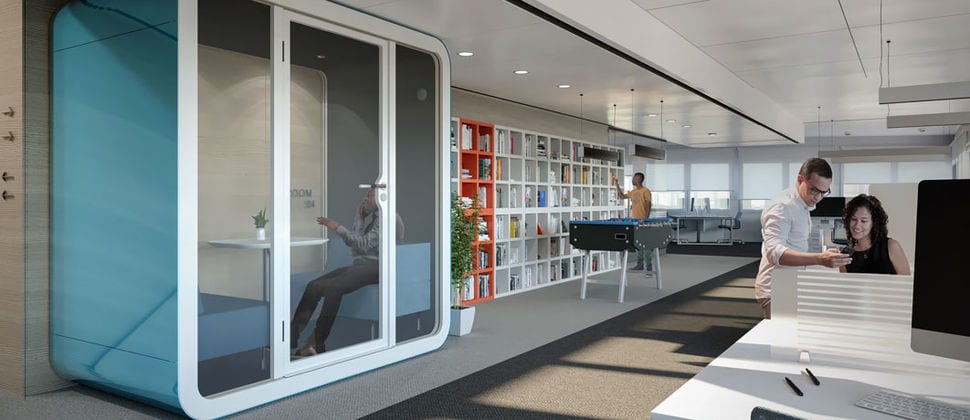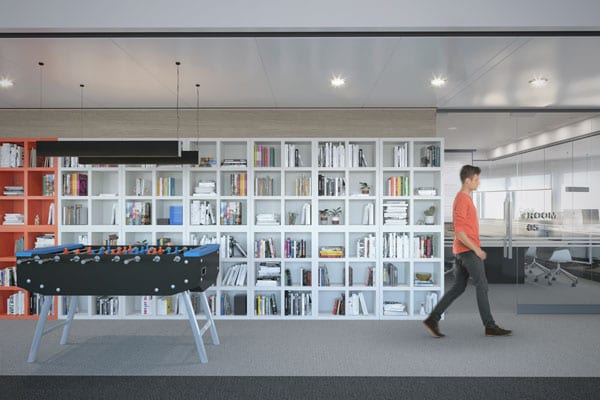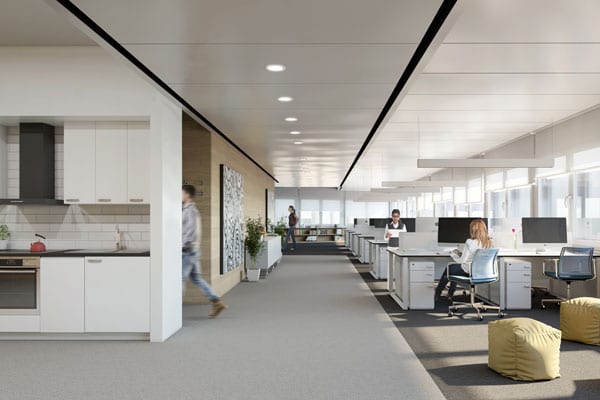
Multispace offices can promote wellbeing at work
A carefully designed multispace environment can reduce expenses as well as motivate and inspire employees. When relocating to a multispace office, however, it should be kept in mind that the methods of working may also need to be actively refreshed. Despite their many advantages, multispace offices may not be the ideal solution for all types of work.
Multispace environments are currently a very popular choice. Interior architect and designer Yuki Abe from Mottowasabi, a design studio specialised in developing work environments, emphasises that the idea behind it all is changing the methods of working, rather than creating new working spaces for their own sake.
”With competent planning and direction in a truly flexible and adaptable space, the efficiency of the work increases. In fact, large-scale physical alterations are not always necessary if more effective results can be achieved by simply updating the rules of operation in the office,” Abe explains.
Mottowasabi recently co-operated with Sponda in designing the construction expert Lehto Group’s new offices in the Väritehtaankatu property in Tikkurila.
”The space must serve the desired model of operation and methods of working. In designing the working spaces, it is useful to consider how the company’s operating model and working methods are changing and what types of spaces would best serve that change, now and in the near future,” Abe says.
A statement of appreciation for intellectual capital
The popularity of multispace office environments is bolstered by digitalisation, which has freed work from the constraints of time and space and made efficient virtual teamwork possible.
”Thanks to technology, many types of work no longer require a physical office. A company’s physical resources can be used with greater efficiency and quality once they are tailored to match the needs of the work,” he states.
It is also a question of appreciating the company’s intellectual capital.
”People are any company’s most important resource. A multispace environment, designed in a controlled manner, will motivate employees to work more efficiently, both in teams and independently, which, in turn, promotes well-being at work,” Abe believes.

Personalised working spaces also serve to strengthen the company’s image as an employer. They signal that the company wishes to invest in the comfort and well-being of its employees. Therefore, the multispace environment also acts as an asset in recruiting new employees.
The transfer from a cubicle office to a multispace environment is always a major change, and companies should reserve sufficient time for the process. The design, training and implementation of your own operating model can often take up more resources than expected. The earlier the employees are brought aboard to give their input on matters, the less likely they are to resist the change.
Narrower working spaces
Valtteri Hongisto, education and research leader in the indoor environment research group at the Turku University of Applied Sciences, estimates that multispace offices are not necessarily ideal for all work tasks. For example, a one-person office is best for tasks that require concentration at a workstation. In such cases, changing the workstation creates no added value. On the other hand, diverse work tasks that require both interaction and privacy benefit from practical working spaces and the opportunity to change workstations whenever necessary.

”The trend began two decades ago in sales organisations where employees were accustomed to mobility at work. Today, new technologies and modular working spaces permit such solutions in other types of organisations as well. When designing new working spaces, emphasis must be placed both on acoustic solutions and on ensuring that there is a sufficient number of different spaces. A proper work etiquette should also be established,” Hongisto says.
He compares the shift from cubicles to multispace offices with trends in technological advancement.
”In the course of the past decade, we have given up desktop computers and paper. As a result, traditional, 16 m2 offices are needlessly large even for those who require their own office. Our work tools have been compressed to a movable laptop and any available 7 m2 workstation,” Hongisto sums up.
Acoustic design reduces noise
Although multispace environments are designed to include various types of spaces, working in them is not automatically mere sunshine and rainbows. Multispace offices usually have plenty of open-plan offices, and their design is faced with familiar challenges. Studies show that employees working in open-plan offices find noise pollution to be the greatest nuisance. Valtteri Hongisto has taken part in a study conducted by the Turku University of Applied Science on measurements and surveys of room acoustics from 21 open-plan offices between 2002 and 2014. The study analysed two variables: distraction caused by noise in general and by speech noise in particular. Through intelligent acoustic design, the problems caused by noise can be efficiently reduced.
”In open-plan offices, the noise experienced is caused mostly by distractive voices. Speech is distracting because of its distinctiveness. The more syllables or words can be recognised from speech, the more it affects the performance of work tasks,” explains Hongisto.
The results clearly showed that noise was less distracting if acoustics were designed in a way that minimised the distraction range of voices.
”With proper acoustic design, it is possible to create an environment where co-operation is easy between nearby workstations without causing distraction to employees working further away,” Hongisto says.
Effective reduction of the distraction caused by speech requires a comprehensive acoustic design that utilises noise damping materials, acoustic screens and masking noise.
”With the right wall and ceiling materials, textile carpets or artificial background hum, noise pollution in an open-plan office can be reduced significantly,” says Hongisto.
Images used in the story are illustrations of the interior of Sponda’s new building on Väritehtaankatu 8 in Tikkurila.
Published 6.10.2017
